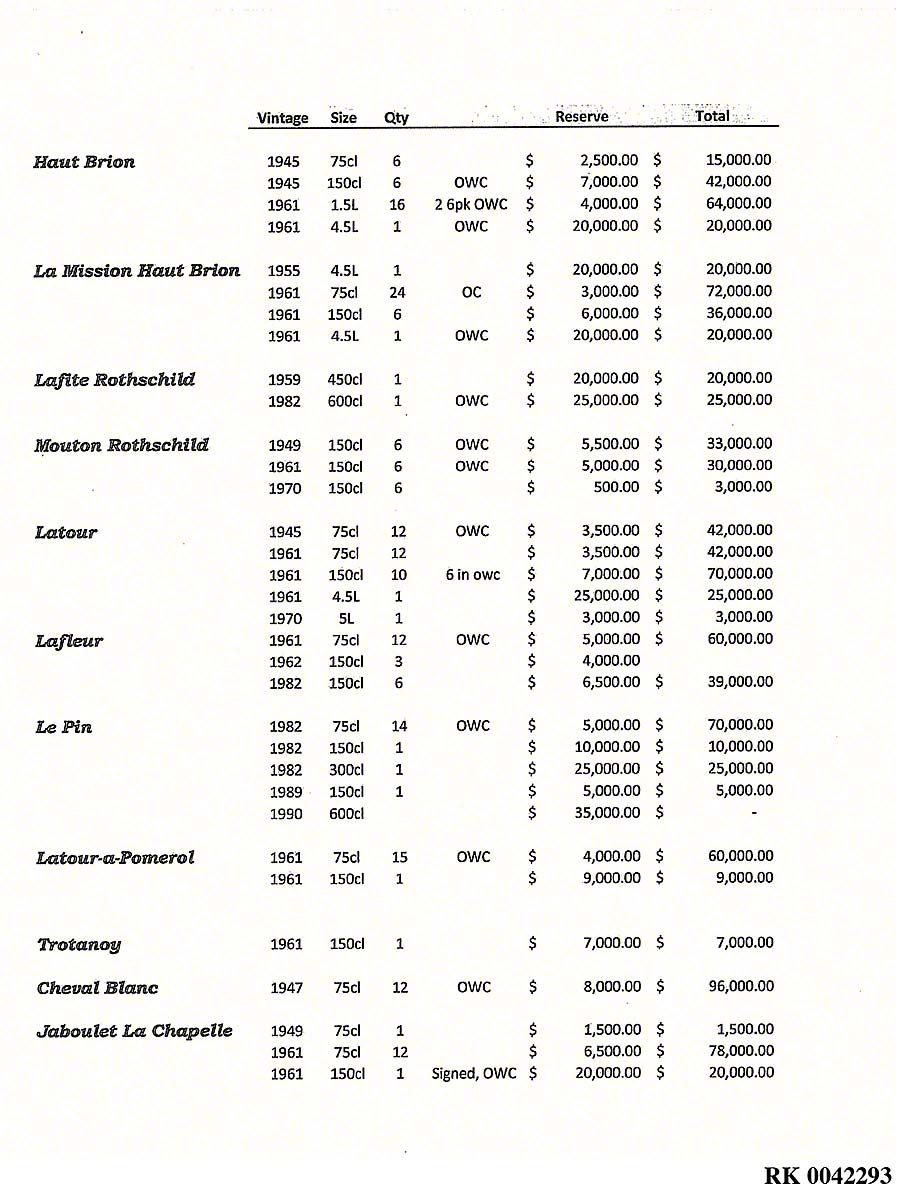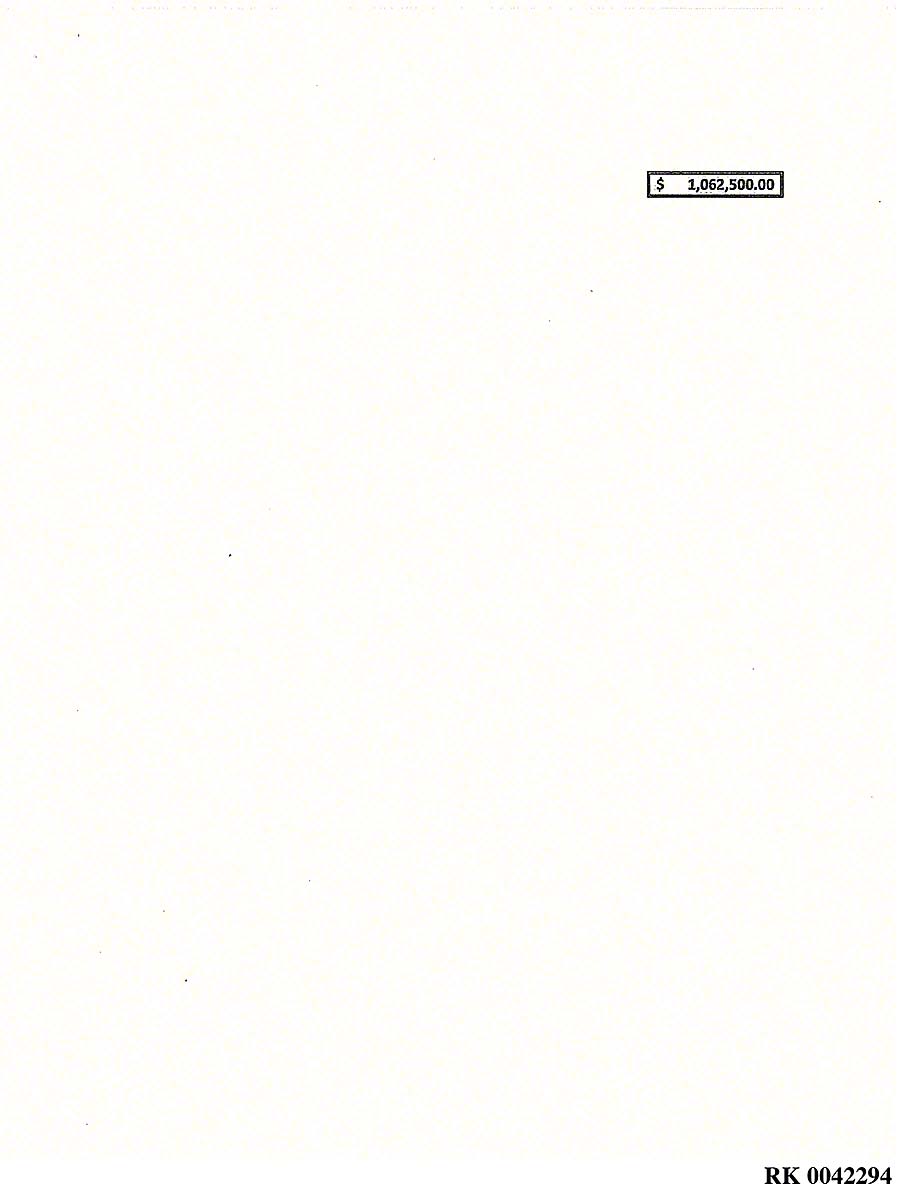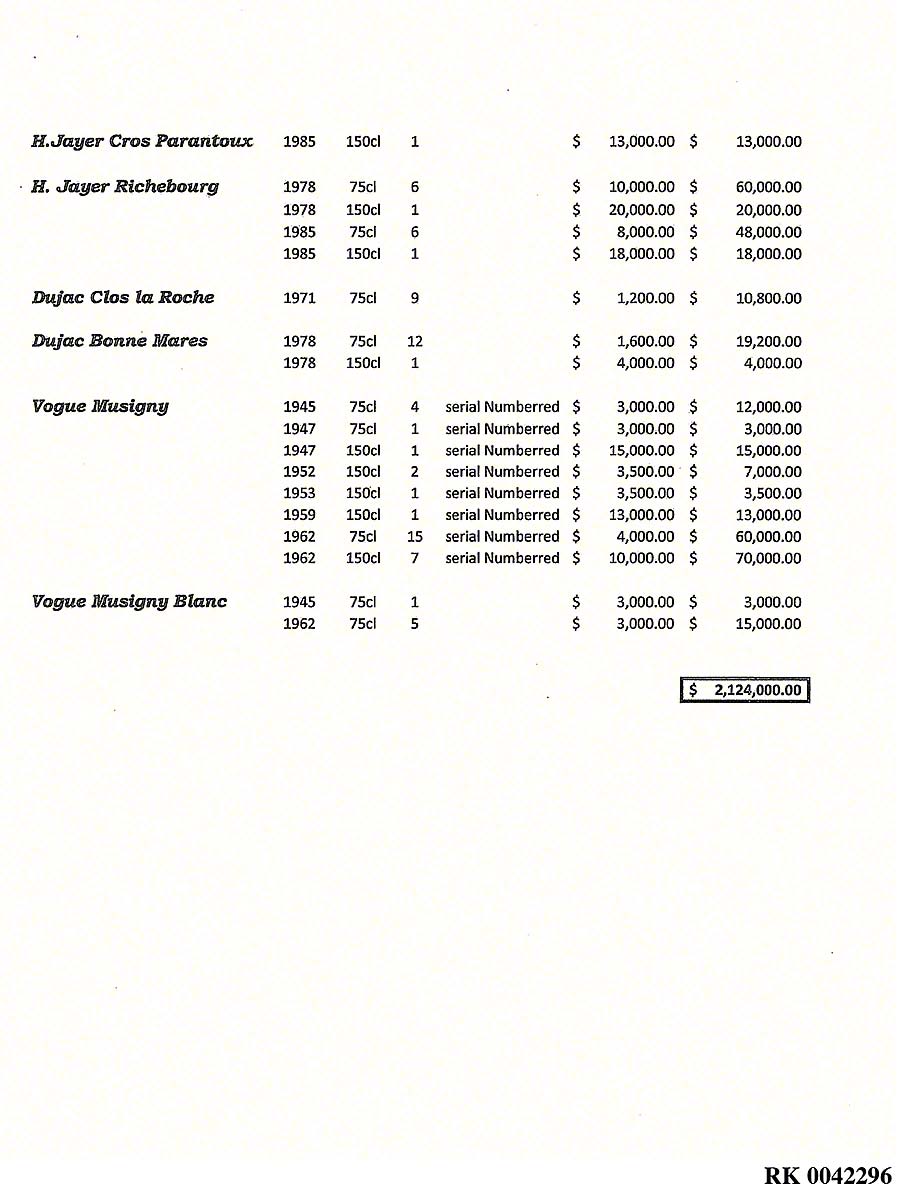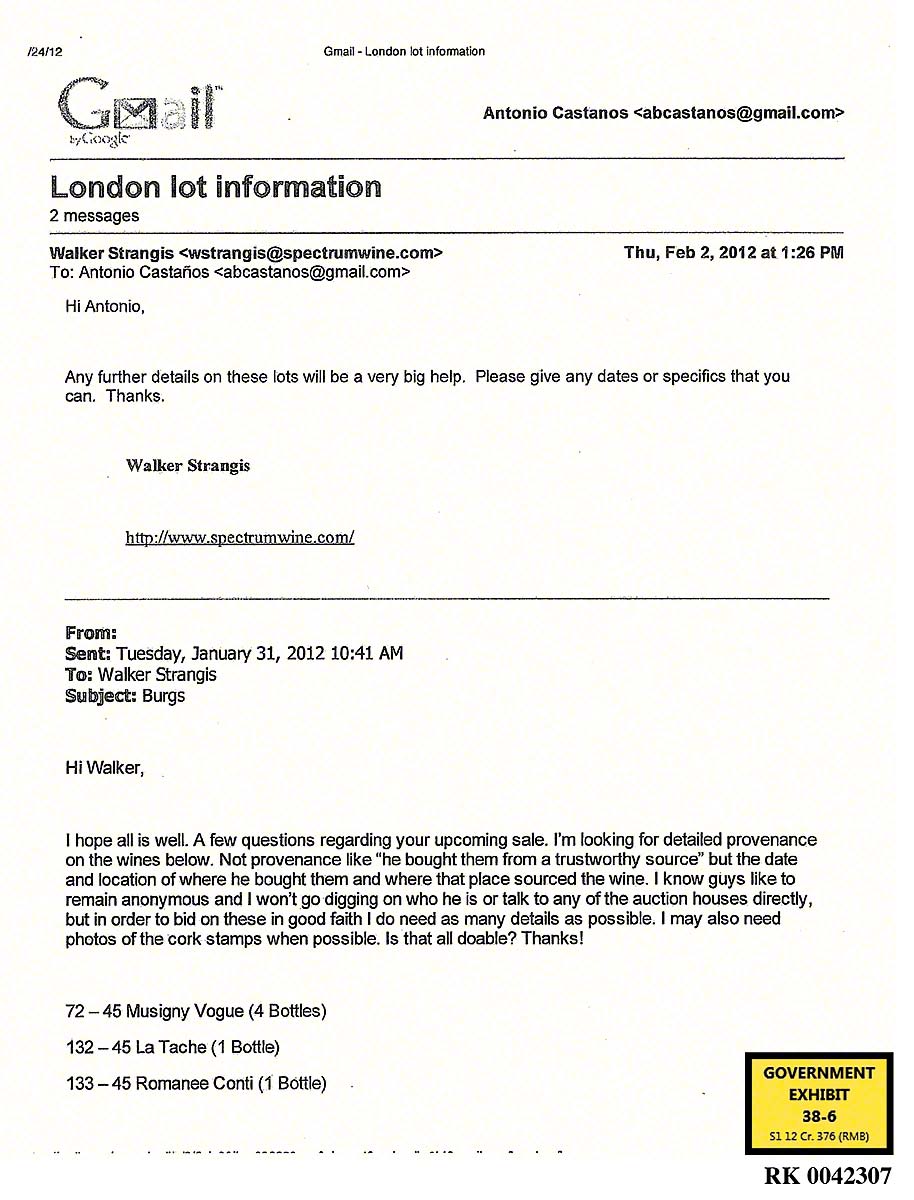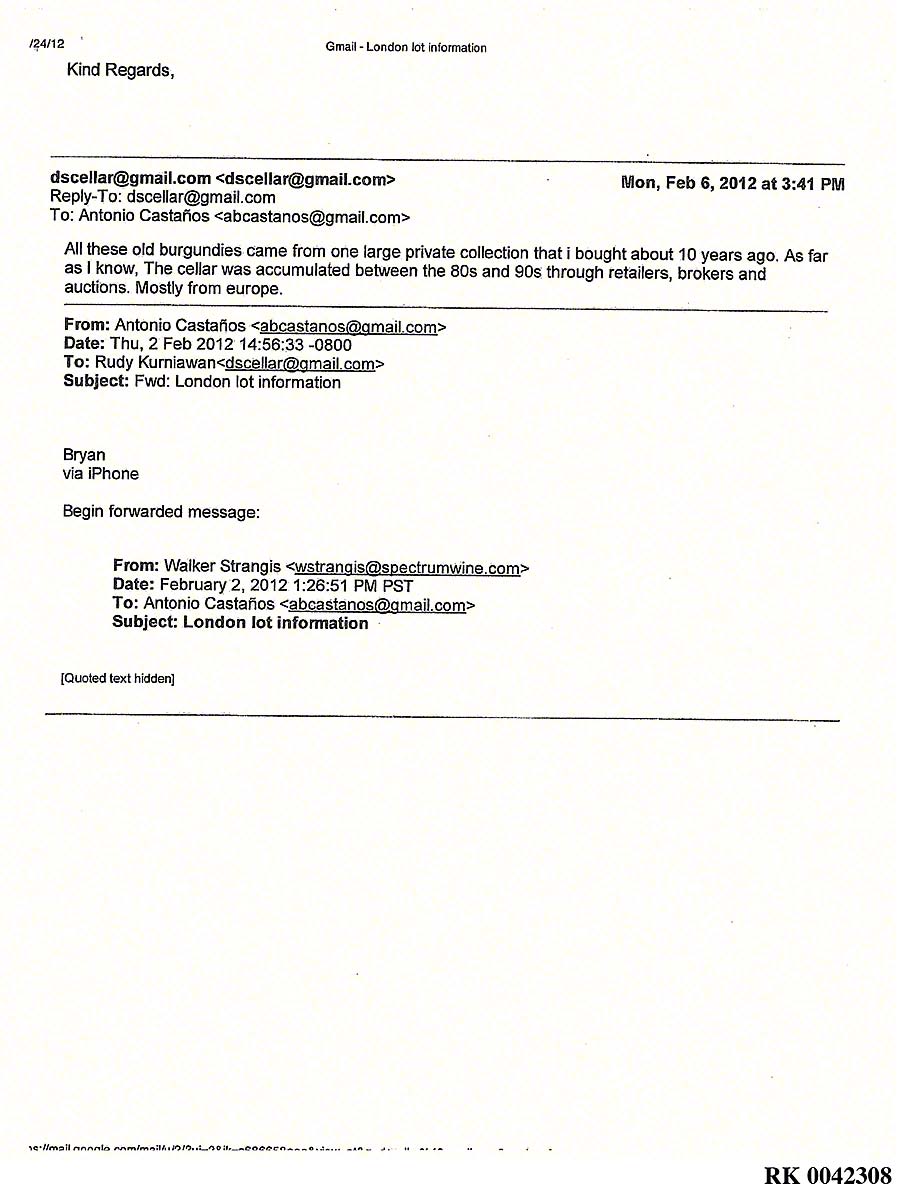The Trial: Part 9
Rudy Kurniawan’s Trial
A Multi-Part Feature on the trial of Rudy Kurniawan, including the transcripts, testimony and evidence that put the largest wine counterfeiter of our time behind bars.
Day 5: Friday 13th December (Continued)
Witness: Antonio Castanos Beltran
Joseph Facciponti began the questioning of Antonio Castanos, the owner of Guido’s restaurant on Santa Monica Boulevard in Los Angeles. Castanos first met Rudy Kurniawan about 10 or 12 years before the trial (i.e. 2001 to 2003), as he was entering Twenty/20, a wine store, and Kurniawan was exiting. During this conversation, Castanos mentioned that he owned a restaurant, and Kurniawan subsequently came to it several times over the years.
Castanos had no idea what Kurniawan did for a living, but he did know that Kurniawan collected wines, and sold them at auction. He confirmed that Kurniawan had asked him to consign wines for him at an auction, the first time in 2006, and several times thereafter until approximately 2012. The reason Kurniawan gave for asking Castanos to do this was because he was a private collector, and didn’t want to see his name there. Sometimes, Castanos would buy the wines from him and then consign them, and sometimes he had a percentage of the sale of the wines, usually about 5%. Over the course this consigning, Castanos realised approximately $400,000. If the wines did not sell, Kurniawan would take them back – even if Castanos had paid for them.
Facciponti asked if Castanos was familiar with an email account dscellar@gmail.com, which he confirmed was Rudy’s email.
Joseph Facciponti then asked if Castanos had consigned wines from Rudy Kurniawan for an auction held by Spectrum Wine Auctions at a company called Vanquish, which Castanos confirmed. He said with reference to Spectrum knowing the identity of the true owner, “I know they don’t supposed to know, but at the same time everybody knew that.” However, he did not tell Spectrum or Vanquish that these wines were coming from Kurniawan. This was an auction to take place in London, England on 8 February 2012.
Facciponti then showed Castanos an email between him and Rudy Kurniawan, dated 11 November 2011.
In this email, Castanos was forwarding to Kurniawan the appraisal of the wines for the auction, as prepared by Spectrum. In a following email, dated 14 November, Kurniawan replied “This is the reserve from another auction house. I have checked auction average and this is definitely correct. What Spectrum give is ridiculously low and not in line with market.” He said he could not email the appraisal as it has name and info on it, but he had typed in the numbers. The wines were going onto sales in Hong Kong in February and March.
Facciponti then produced Exhibit 38-6, an email chain again on the subject of the Spectrum auction.
3-11
It began with an email from Walker Strangis, who worked in wine consignments for Spectrum, asking Antonio Castanos for any further details on some the lots he was consigning. Strangis forwarded to Antonio Castanos an email asking for detailed provenance on the wines – date and location bought, and the place that sourced the wine, together with photos of cork stamps where possible. Rudy replied to him that all the old Burgundies came from one large private collection he had bought about 10 years ago, which as far as he knew was built up through retailers, brokers and auctions, mainly in Europe, over the 80s and 90s.
Facciponti then showed Castanos several bottles, marked Exhibits 3-1 through 3-14.
Castanos confirmed that these were the bottles he consigned through Spectrum, and which appeared in the Spectrum catalogue.
Joseph Facciponti then showed Exhibit 16-2, a list of all the wines withdrawn from the Specturm auction.
Antonio Castanos Beltran, cross-examination
Jerome Mooney asked Castanos if he remembered how many bottles he sent to the Spectrum auction. Castanos replied that he didn’t know. Mooney pointed out on Exhibit 14-4 it said 429, and Castanos agreed that the exhibits shown were only a portion of the wines that had been consigned. He did not know exactly which ones were withdrawn; he did confirm that some didn’t sell. He did not get back the wines that did not sell. Mooney asked if they were sent to Hong Kong, and Castanos replied that he thought that what Mooney was thinking of was that some wines were sent to Hong Kong, never destined for London.
3-12
Mooney then went back to Exhibit 16-2, which listed the wines being withdrawn, and the reasons why, including “signs of past seepage”. Castanos agreed he would not serve that in his restaurant, but it doesn’t mean one cannot sell it.
Mooney asked if Castanos and Rudy were friends. Castanos said yes, they were. Rudy called him “dad”, and his wife “mom”. He had been to the warehouse where Kurniawan stored his wine, which he described as “huge”. However, the wines to be consigned for auction were usually delivered to his house, from where the Spectrum people would collect it. He never went to the warehouse to pick up wines, nor did he ever go to Kurniawan house.
Castanos agreed that he thought Spectrum would examine the wines, and said that he does not consider himself to be an expert on authenticating wine. However, it was a surprise to him that the auction house said there were a number of bottles they were withdrawing. This was the first time that had happened. They had previously consigned wines through Zachy’s and Christies, and no bottles had been rejected by Zachy’s, and Christies may have rejected some, but very few.
Castanos confirmed that sometimes he would receive advances for the wine. In these cases, he would pay every penny of the advance over to Rudy.
He also confirmed that sometimes he would put wines in for other people, one or two cases at a time. This would arise when people heard he was selling wine, and asked if they could just add a case or two to his consignment, to make it easy for themselves.
Castanos said that practically everyone knew that the wines came from Rudy, including the people at Spectrum. He did not say it, because he did not have to say it. “People knew that the wine was coming from [Rudy] especially the wine in the auction in London. We know that the guy from London, Richard Brenner (He means Brierley), he was buying Rudy’s wine at the same time.” Castanos said they would know this because it was the type of wine that Rudy had, and agreed that it was his opinion, his assumption.
Castanos confirmed that on the most recent consignment, he put part in his name, and part in his son’s name, and that he would “definitely not” have done that if he thought there were problems of fraud going on. He added that he wanted to say more about that: “I have four people, four people from Spectrum to come and to check these wines out for one month. For one month. And two people in London checking this wine for one month and exchange photographs and things like that. So at the same time this guy in London buy wine from Rudy at the same time, so that make me feel comfortable. Comfortable that everything is fine. Now looks like it’s not.”
Castanos said that he did not personally know if there were any problems with any of the bottles. He had previously bought fake bottles, and that sort of thing does happen. He named the four from Spectrum as Walker Strangis, Amanda Crawford, Jason Boland and someone else. When asked if a Egan was among the group Castanos said he did not know if Mr Egan was involved, but no one by that name came to him. None of the inspections in LA resulted in wine being withdrawn; it was only done so once sent to London. He has never been told what the problems were.
Antonio Castanos Beltran, re-direct
Joseph Facciponti redirected Castanos, showing him 14-4, with his name on it, and confirming that Castanos had not told anyone that it was Kurniawan who gave him the wines to sell.
Facciponti asked if Castanos was an expert in whether wines were authentic or not. He replied that he is not – he has an opinion, but he is not an expert.
Click here for Part 10.



